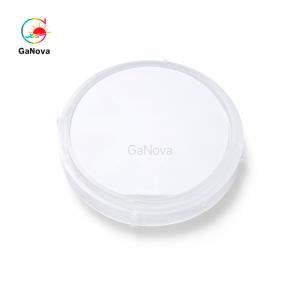

Add to Cart
Description:
Epiaxial wafers refer to products formed by growing a new single
crystal layer on a single crystal substrate. Epiaxial wafers
determine about 70% of the performance of devices and are important
raw materials for semiconductor chips. Epiaxial wafer manufacturers
use CVD (Chemical Vapor Deposition) equipment, MBE (Molecular Beam
Epitaxy) equipment, HVPE equipment, etc. to grow crystals and
produce epitaxial wafers on substrate materials. Epitaxial wafers
are then manufactured into wafers through processes such as
photolithography, thin film deposition, and etching. The wafer is
further cut into bare chips, which go through packaging processes
such as substrate fixation, installation of protective shells, wire
connection between chip circuit pins and external substrates, as
well as circuit testing, performance testing, and other testing
steps to ultimately produce the chip. The above chip production
process needs to maintain interaction with the chip design process
to ensure that the final chip meets the chip design requirements.
Based on the performance of gallium nitride, gallium nitride
epitaxial wafers are mainly suitable for applications at high
power, high frequency, medium and low voltage, specifically
reflected in: 1) High bandgap width: The high bandgap width
improves the voltage resistance level of gallium nitride devices,
which can output higher power than gallium arsenide devices,
especially suitable for 5G communication base stations, military
radar and other fields; 2) High conversion efficiency: The
conduction resistance of gallium nitride switch power electronic
devices is three orders of magnitude lower than that of silicon
devices, which can significantly reduce switch conduction losses;
3) High thermal conductivity: The high thermal conductivity of
gallium nitride endows it with excellent heat dissipation
performance, making it suitable for the production of devices in
high-power, high temperature and other fields; 4) Breakdown
electric field strength: Although the breakdown electric field
strength of gallium nitride is similar to that of silicon nitride,
the voltage tolerance of gallium nitride devices is usually around
1000V due to factors such as semiconductor technology and material
lattice mismatch, and the safe operating voltage is usually below
650V
specifications:
